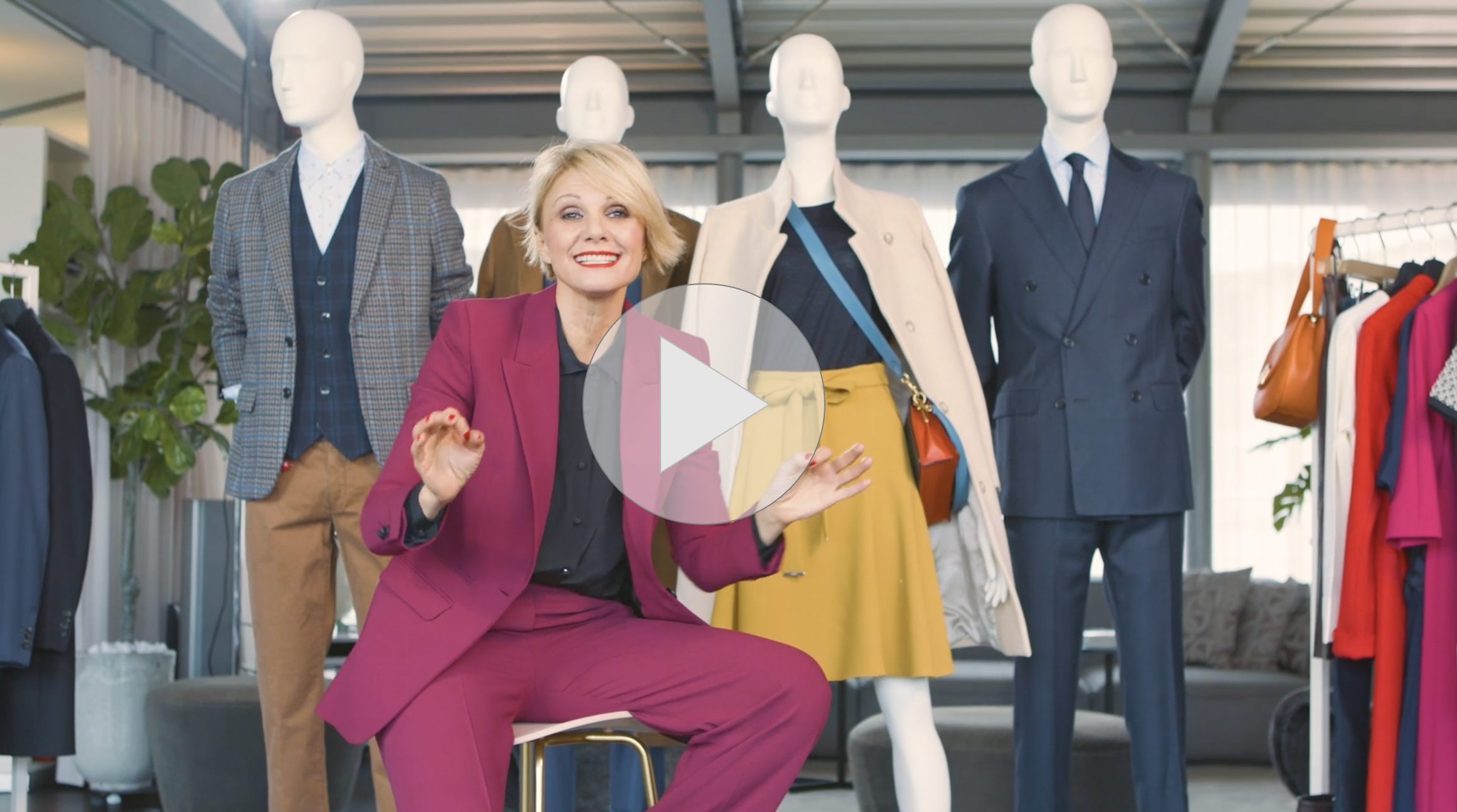Dressing the Part
Table of contents
The Business Look
“You cannot not communicate,” said communications theorist, Paul Watzlawick. As soon as two people recognize each other’s presence, an exchange of information takes place. This can be through a few quick words on the stairs, an inquisitive look on the bus, or dirty shoes at an interview. Various studies have demonstrated that what one person remembers about the other after an encounter are non-verbal impressions like body language, behavior, and appearance. Take the example of your boss turning up with an expensive new watch. Whatever she said about her project, everyone has forgotten after two more meetings at the latest.
So don’t focus only on perfecting your PowerPoint presentation but think about your look.
In the following styling video PKZ's stylist Luisa Rossi will explain you how to get into the professional world outfit-wise.
Watch the video (available in German exclusively) on our Youtube channel.
PKZ's styling expert has spoken. Here are a few important tips summarized once again.
- From shoes to a matching tie, an outfit should be bought completely.
- For the ladies: The length of a coat should be adapted to the outfit underneath. Whoever wears dresses or skirts, chooses a longer coat.
- If you are unsure about the choice of color: a white blouse or shirt is always a good choice.
- Accessories give a simple outfit that certain pep. With bags or scarves every look gets something personal.
All shown articles in the video can be found on the PKZ website.
1: What Kind of Effect Do I Want to Create?
Unkempt hair, bright lipstick, or jacket sleeves that are too short all say something about a person, and can quickly lead to an impression of slovenliness, conceit, or lack of sophistication. Our subconscious minds make connections - and form prejudices. This is why you need to take a moment to ask yourself the following questions:
- Who am I exactly - and how do I want to be perceived?
- Am I an alpha leader who wants to be noticed?
- Or do I feel more comfortable as number two, preferring to stay in the background?
Each of these positions is equally legitimate - you just need to be sure how you want to come across.
2: What Is Your Preferred Look?
Suppose you wish to work in the diplomatic service. Then it is important that you meet your various counterparts on a visually equal footing, i.e. in something smart but casual with ordinary citizens, and a well-cut suit for a high-profile television debate. And it is the same with in education, in the services sector, manual trades, and banking. Each group has its own language and symbols. In short, a dress code that contains encrypted information. Study this code, translate the language, and answer the following questions:
- Who will be my counterpart, how does this person function, and how will they look?
- What does this person - and their superior - wear?
- Which clothing style is appropriate, including patterns, colors, and materials?
- How much value is given to status symbols?
- What are the standards for hair, skin, make-up, and facial hair in this sector?
- What will be expected of me in this respect - and how much freedom will I be granted?
And lastly: Do I as a person feel comfortable with this dress code?
3: What's My Concept? What Do I Have? What Do I Need?
A good wardrobe is not built on quantity but on basics. These must be a few high-quality pieces that look immaculate and coordinate well in terms of color and style. A dress, skirt, pants, blouses, shirts, sweaters, tights, socks, jackets, and coats, plus shoes, belts, bags, silk or woolen scarves, jewelry, and a watch. Good basics are those that suit you and provide the best response to these questions:
- What makes me look my best?
- Which clothes best frame my personality?
- What enhances my posture and flatters my figure?
- What is suitable at what time of the day - and what not?
- Which pieces of my wardrobe need attention and what needs to be replaced?
Once you have worked out which basics you need, first take a look in your closet. Sort it out if necessary and establish an overview: “What good pieces do I have that fulfill these criteria - and what is missing? What do I still wear and what do I no longer wear?” Then make yourself a shopping list and buy only what you need.
With a good basic wardrobe, you will not only save time when getting dressed every day but money too.
Just as a picture is worth more than a thousand words, your appearance and personal image hold huge potential for marketing yourself, a factor which is often ignored. Be aware of the impression you make on other people and make it work to your benefit. After all, your appearance says something about you before you have even said hello.
“Don't dress for the job you have but for the job you want!” (Giorgio Armani).
